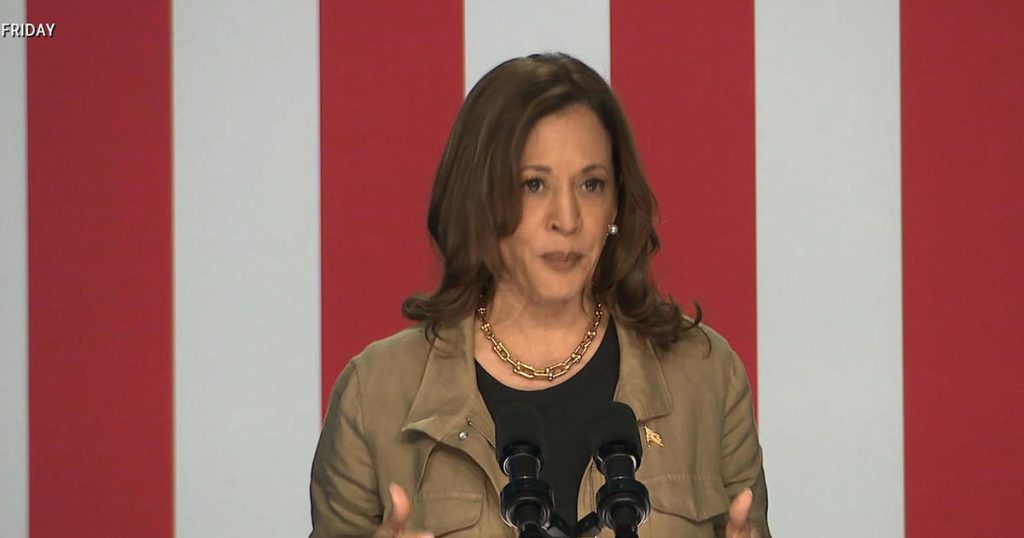Vice President Kamala Harris recently held a rally in Nevada following a fundraiser in Los Angeles. Meanwhile, former President Donald Trump campaigned in Pennsylvania, where his rhetoric and insults have come under new scrutiny and backlash from both Democrats and Republicans. CBS News correspondent Caitlin Huey-Burns provided coverage from Erie, Pennsylvania. The contrast between the two campaigns is clear, with Harris focusing on engaging with voters and Trump drawing attention for his controversial language and behavior.
Harris’ rally in Nevada was part of a larger effort to connect with voters and promote the Biden administration’s agenda. Her appearance in the swing state indicates a strategic approach to building momentum for the Democratic party leading up to the 2022 midterm elections. In contrast, Trump’s campaign in Pennsylvania was marked by his typical inflammatory remarks and attacks on political opponents. This divisive language has been met with criticism from both sides of the political aisle, as some Republicans express concern over its impact on the party’s image.
The scrutiny of Trump’s rhetoric comes at a time when the Republican party is grappling with internal divisions and seeking to define its identity post-Trump. While the former president remains a influential figure within the party, his controversial statements have increasingly alienated moderate and independent voters. This has led to a backlash from some Republicans who are growing weary of Trump’s confrontational approach. The contrast between Harris’ message of unity and Trump’s divisive tactics highlights the ongoing struggle for control within the GOP.
As the 2022 midterm elections approach, the political landscape is becoming increasingly polarized. Harris’ rally in Nevada and Trump’s campaign in Pennsylvania represent the divergent approaches of the two major parties in engaging with voters and shaping public opinion. While Harris focuses on promoting the administration’s policies and connecting with constituents, Trump continues to rely on provocative language and attacks to rally his base. The outcome of these campaigns will have a significant impact on the future direction of American politics.
The media coverage of Harris’ rally and Trump’s campaign reflects the broader debate over the role of political leaders in shaping public discourse. While Harris seeks to project a message of inclusivity and progress, Trump’s rhetoric has been criticized for fueling division and conflict. The clash between these two approaches underscores the challenge facing voters in deciding which path to support in the upcoming elections. Ultimately, the response to Harris’ rally and Trump’s campaign will reveal the priorities and values that resonate most with the American electorate.
In conclusion, the campaigns of Harris and Trump in Nevada and Pennsylvania, respectively, highlight the contrasting strategies and messages of the Democratic and Republican parties. As the midterm elections approach, the political landscape is becoming increasingly polarized, with Harris emphasizing unity and progress while Trump relies on confrontation and controversy. The scrutiny and backlash facing Trump’s rhetoric underscore the challenges facing the GOP in defining its identity post-Trump. The outcome of these campaigns will shape the future of American politics and determine the direction of the country in the coming years.


